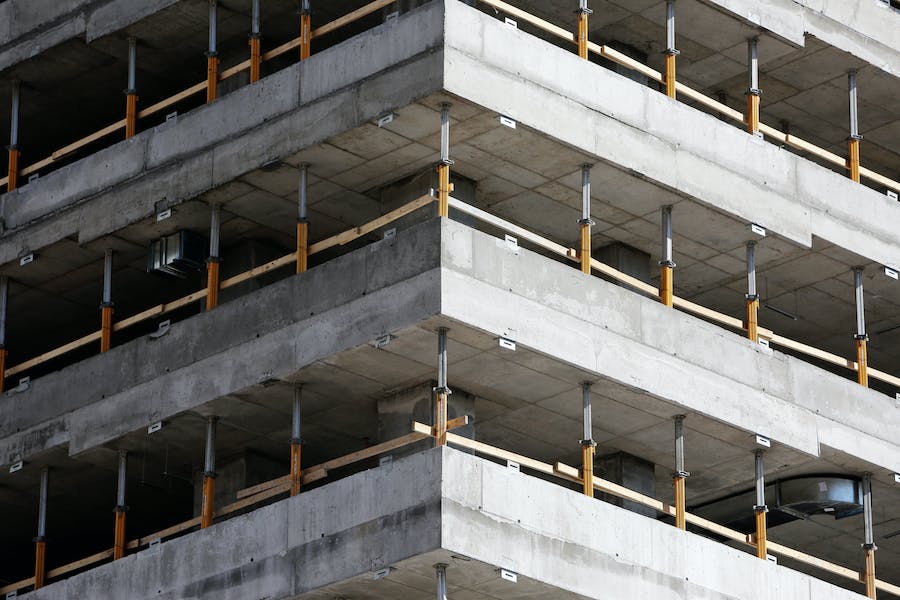Is Cement Board Waterproof: Cement Board’s Waterproofing Capabilities
Share
Cement board is a versatile building material crucial in modern construction, offering strength and stability in various applications. In waterproofing, understanding the properties and capabilities of cement boards is essential. This article delves into the question: “Is cement board waterproof?” By exploring its composition, water resistance, waterproofing techniques, real-world applications, advantages, limitations, and case studies, we aim to provide a comprehensive guide for builders, contractors, and homeowners seeking effective waterproofing solutions in their construction projects. Whether you’re planning to use cement boards in bathrooms, exteriors, or tile installations, this article will help you make informed decisions to ensure the longevity and integrity of your structures.
Is Cement Board Waterproof?
Cement board is not inherently waterproof but exhibits water resistance. It can withstand exposure to moisture and is commonly used in wet areas like bathrooms and as a tile backer board. However, additional waterproofing techniques and products, such as membrane coatings or sealants, are necessary to prevent water infiltration through seams and joints. It’s crucial to correctly install and maintain cement board and complement it with appropriate waterproofing measures for optimal water protection in construction projects.
How Cement Board Provides Water Resistance
Cement board provides water resistance through its composition and manufacturing process, typically including cement, reinforcing fibers, and additives. Here’s how it achieves water resistance:
Non-Organic Materials: Cement board primarily comprises non-organic materials, such as cement, glass fibers, and various additives. These materials are chosen because they do not have the vulnerabilities associated with organic materials like wood or gypsum board. When exposed to moisture, organic materials can rot, decay, or promote mold and mildew growth. In contrast, the non-organic composition of cement board ensures that it remains structurally sound even when subjected to water or high humidity.
Dense And Solid Structure: Cement boards are engineered to be dense and solid. This characteristic is essential for water resistance because it makes it difficult for water to penetrate the surface. The density of cement board serves as a barrier that prevents water from infiltrating the material, ensuring that it remains stable and doesn’t deteriorate when exposed to moisture.
Minimal Porosity: The manufacturing process of cement board involves tightly compressing the ingredients during production. This compression results in a material with minimal porosity, meaning it has very few open spaces or tiny pores. Low porosity is advantageous for water resistance because it reduces the likelihood of water absorption. The minimal porosity of cement board makes it an excellent choice for applications where protection against moisture is crucial.
Hydrophobic Additives: Some formulations of cement board may include hydrophobic additives. Hydrophobic substances have a natural aversion to water, causing water to bead up and roll off their surfaces. These additives enhance water resistance by repelling water molecules when incorporated into cement boards. This added layer of protection can be beneficial in applications with a higher risk of water exposure.
Resistance To Expansion And Contraction: Cement boards exhibit low thermal expansion coefficients, meaning they do not expand or contract significantly when exposed to temperature fluctuations or moisture. This property helps maintain the board’s structural integrity even when subjected to varying environmental conditions. It prevents the material from warping, cracking, or becoming compromised due to changes in temperature or humidity levels.
Waterproofing Techniques For Cement Board
Waterproofing cement board is essential in applications where protection against moisture and water infiltration is critical. Various techniques and products can be used to enhance the water resistance of cement boards. Here, we’ll explore these waterproofing techniques in more detail:
- Liquid Membrane Waterproofing: Liquid membrane waterproofing involves applying a liquid waterproofing material, typically a polymer-based liquid, directly onto the surface of the cement board. It forms a continuous, seamless membrane that prevents water penetration. Liquid membranes are versatile and can be applied to horizontal and vertical surfaces. They are effective at sealing seams, joints, and corners. Some liquid membranes are elastomeric, allowing for expansion and contraction. Proper surface preparation, including cleaning and priming, is crucial for adhesion. Multiple coats may be required to achieve the desired thickness and effectiveness.
- Sheet Membrane Waterproofing: Sheet membrane waterproofing involves adhering to pre-manufactured waterproof sheets or rolls to the surface of the cement board. These sheets create a physical barrier against water intrusion. Sheet membranes are highly effective and durable. They provide excellent protection against water and can bridge cracks and gaps in the substrate. Proper installation techniques, including seam sealing and corner treatments, are essential to maintain integrity. Ensure that the adhesive is compatible with the cement board and the membrane material.
- Cementitious Waterproofing: Cementitious waterproofing involves applying a specialized mortar or coating to the cement board surface. This coating forms a dense, waterproof layer upon curing. Cementitious waterproofing is particularly suitable for exterior applications and below-grade structures. It can withstand hydrostatic pressure from water. Proper mixing and application techniques are critical for the effectiveness of cementitious waterproofing. It may require multiple coats to achieve the desired thickness.
- Surface Coating: Surface coatings are liquid or spray-applied materials that form a protective layer on the cement board’s surface. These coatings can be elastomeric or epoxy-based and offer excellent water resistance. Surface coatings are relatively easy to apply and provide a smooth, seamless finish. They are ideal for areas like showers and bathrooms. Surface coatings may require periodic maintenance or reapplication, especially in high-wear areas.
- Seam Sealing And Joint Treatment: Regardless of the waterproofing technique, special attention should be paid to sealing seams and treating joints, edges, and corners. Waterproof joint compounds, tapes, or sealants are applied to ensure these vulnerable areas remain watertight. Proper seam sealing and joint treatment prevent water infiltration at critical points. They enhance the overall water resistance of the cement board system. Follow manufacturer guidelines for seam sealing and joint treatment. These areas must be inspected and maintained regularly.
- Proper Installation And Flashing: Effective waterproofing begins with proper installation practices. Ensure that the cement board is correctly fastened and supported and that penetrations (e.g., pipes and fixtures) are properly flashed and sealed to maintain the water-resistant barrier. Proper installation is fundamental to the long-term performance of waterproofing systems. It prevents water from finding paths of least resistance. Follow industry best practices and adhere to manufacturer recommendations during installation. Regularly inspect and maintain the installed waterproofing system.
Limitations Of Water Resistance In Cement Board
Water resistance is a valuable characteristic of cement boards, but it’s essential to understand their limitations to make informed decisions in construction projects. Here are some limitations of water resistance in cement board:
Seam And Joint Vulnerability:
Cement board sheets are typically installed with seams and joints where two pieces meet. These areas can be vulnerable to water infiltration if not adequately addressed. The water-resistant properties of cement boards can be compromised if seams and joints are not adequately sealed with waterproof joint compounds or tapes. Over time, water can seep into these unprotected areas, potentially leading to structural damage or mold growth. Therefore, paying careful attention to seam and joint treatment during installation is crucial, ensuring they remain watertight.
Edge And Corner Treatment:
Edges and corners of cement board panels are inherently more exposed to moisture and water than flat surfaces. If left unprotected, they can become weak points where water can penetrate. To mitigate this vulnerability, edge, and corner treatments are essential. Applying waterproofing products, such as sealants, to these areas helps create a barrier against water intrusion. Neglecting proper edge and corner treatment can lead to moisture-related issues over time.
Not Completely Waterproof:
Cement board is classified as water-resistant but only partially waterproof. While it can withstand exposure to moisture and humidity, it may not be suitable for applications requiring absolute waterproofing, such as submerged installations or areas subjected to continuous water immersion, like swimming pools or fountains. In such cases, additional waterproofing measures, such as using waterproof membranes or coatings, are typically necessary to provide the required level of protection.
Maintenance Needs:
Regular maintenance is essential to ensure the long-term water resistance of cement boards. Periodic inspections should be conducted to check for any signs of damage, cracks, or deterioration in the surface treatment. Any issues discovered during inspections should be promptly addressed. Maintenance also includes keeping seams, joints, and edge treatments in good condition. Proper maintenance practices help ensure cement boards perform effectively in wet or humid environments, preventing water-related problems.
Limited Insulation:
The cement board is not insulating, meaning it does not provide thermal insulation. Additional insulation materials should be incorporated alongside the cement board in applications where insulation is necessary to prevent condensation or temperature-related issues. Failure to address insulation needs could result in moisture buildup or energy inefficiency in the building.
Weight And Installation Challenges:
Cement boards can be heavy and challenging, especially in overhead or vertical installations. Improper fastening or inadequate support can lead to the board sagging or displacement, compromising its water-resistant properties. Additionally, the weight of cement board may necessitate structural considerations in some projects, requiring suitable load-bearing structures to accommodate its weight safely.
Compatibility With Certain Finishes:
Some finishing materials, such as specific tiles and adhesives, may only adhere well to cement boards with proper preparation and priming. Compatibility issues can affect the overall effectiveness of the water-resistant system. It’s essential to follow manufacturer recommendations, prepare the cement board surface correctly, and use compatible adhesives and finishes for the desired application to maintain water resistance.
Bottom Line
In summary, waterproofing cement board is crucial for safeguarding against moisture and water damage in construction projects. Employing the proper waterproofing techniques, such as liquid or sheet membrane applications, cementitious coatings, and meticulous seam sealing, enhances the water resistance of cement boards, ensuring the longevity and integrity of structures. Proper installation and regular maintenance are vital for a robust and enduring waterproofing system.
FAQ’s
What Is Cement Board, And Is It Waterproof?
Cement board is a construction material made of cement, reinforcing fibers, and additives. While it is not inherently waterproof, it is water-resistant, meaning it can withstand exposure to moisture and humidity without deteriorating.
Can Cement Board Be Used In Wet Areas Like Bathrooms And Showers?
Yes, cement board is commonly used in wet areas like bathrooms and showers due to its water-resistant properties. However, it should be combined with proper waterproofing techniques for optimal protection against water infiltration.
What Are The Waterproofing Techniques For Cement Board?
Waterproofing techniques for cement boards include liquid and sheet membrane waterproofing, cementitious coatings, surface coatings, and proper seam sealing and joint treatment. Each method offers varying levels of water resistance and durability.

















